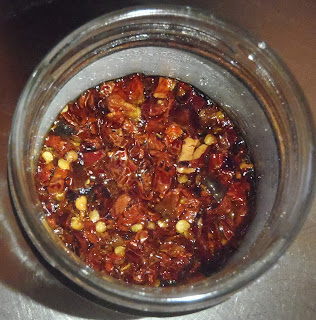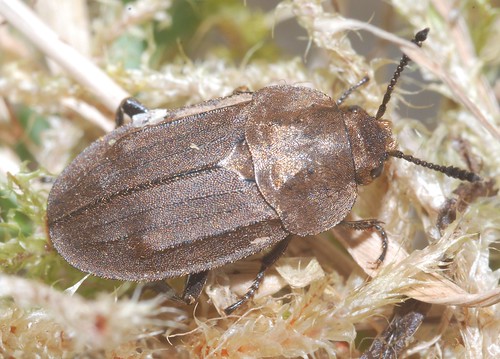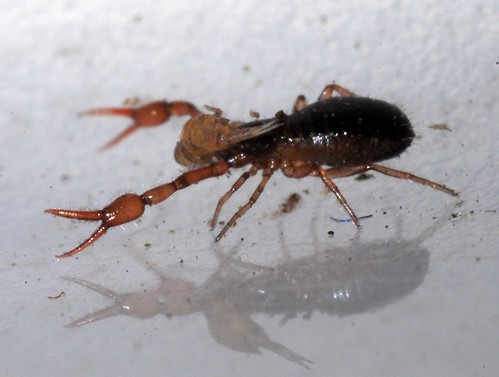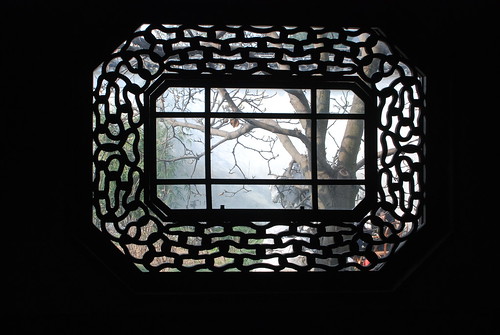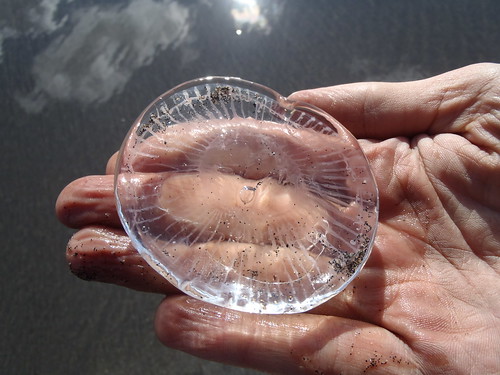I dare say some of you remember the last installment of that fantasy trilogy I've been writing for far too long..? One or two of you might even have bought it, for which much appreciation (and sympathy). Well, the wait for part 2 is over, and here it is:
http://www.amazon.co.uk/Spirit-Between-Worlds-Whispering-ebook/dp/B00CQA9JHC/ref=sr_1_1?ie=UTF8&qid=1368526311&sr=8-1&keywords=spirit+between+worlds
For those who were completely baffled by what was really going on in the first book, things in this one start to become much clearer... although there are of course some big unanswered questions to tie up later. Anyway, I really hope some of you enjoy it as a bit of a diversion from reality, and if anyone wanted to review one or other of them on Amazon, that would be fabulous. I've started to pick up the thread in the third book as well, although it won't be ready for a while.
On the subject of books, albeit a completely different one, my aunt has recently published a historical novel set in mid Wales a couple of centuries back. This was a time when the baptist minister ruled, mistakes were hard to forgive, and life (especially for women) could be very hard indeed. It's not my normal sort of read, but I'm actually finding it beautifully written and utterly compelling... definitely recommended if this sounds like your sort of thing.
http://www.amazon.co.uk/Leap-Wild-Water-Jenny-Lloyd/dp/1482600021/ref=sr_1_cc_1?s=aps&ie=UTF8&qid=1368526583&sr=1-1-catcorr&keywords=leap+the+wild+water
Tuesday 14 May 2013
Any gluttons for punishment?
Thursday 9 May 2013
Chilli oil
The chilli oil has two ingredients: dried chillis and oil. The chillis used in China are hot but not too hot. We couldn't find exactly the right sort here, so we chose to use large Kashmiri chillies. The small Indian dried chillis would have been too hot.
Joe started off by frying the chillis in a little oil. Dry-frying them resulted in burnt chillis, and we had to start again.
This is what the contents of the jar looked like shortly after putting the oil in.
The flavour and colour took a couple of days to develop. Now it tastes exactly like the stuff on the tables in the Chinese noodle shops. Yum!
Thursday 25 April 2013
More Welsh Gold
This is just to give you something to look at... and to further convince you that we've forgotten all about fossils and are looking at shiny things instead. (Actually, that's not true at all - we're working on all sorts of fossily things at the same time, and there are a couple more papers accepted in the past week; we'll certainly be writing something about them when they're ready.)
This here is one of those things you are only ever likely to see once in your life. And that's only if you're looking, and lucky. It hasn't been seen in Powys for the past 50 years, and is one of those beetles that you just can't imagine being overlooked: it's about a centimetre long, and the golden scales are rather good at catching the sunlight.
It's one of the burying beetles, a delightful carrion-feeding group that are fond of decaying animal remains. In fact, they're so fond of them that they're used in forensics to establish how long a victim has lain undiscovered... Some species have the redeeming feature of burying some tasty morsel with their eggs, and adding themselves (both parents) into the cache in order to take care of the little ones. Rather sweet, really. This one probably doesn't bother, though.
If the food is infested by maggots (as it commonly is), those species with some parental scruples tend to abandon the feast and leave it to the flies. The group that this delightful chap belongs to, though, will apparently just eat the maggots instead. It's amazing behaviour for; just goes to show that one should never judge a book by it's cover...
All that said, it appears that Aclypea opaca is rather different. It's also known as the Beet Burying Beetle, for the simple reason that it's fond of beets and turnips. Rather oddly, and in direct contrast to its cousins, this species is vegetarian. The details of its lifestyle, though, remain somewhat obscure, because it's also rather rare. It's listed as Notable A, and is believed to occur in fewer than 30 ten-kilometre squares across the country. So, when it turns up in deep moss beneath gorse and nettles, in an overgrazed sheepy hillside without a turnip in sight... you just have to wonder what on earth it's doing there.
If we hadn't been looking for those thousand species (see previous post), I'd never have seen it. And that really would have been a shame.
Thursday 11 April 2013
A thousand species
It's been amazingly busy, given that we're not working. Technically. One thing that we've taken on is a rather major challenge: record a thousand species in one year in a single l km grid square. The challenge was posted on Wild About Britain* and seems to have attracted quite a few people. If you have some time, and the inclination, it is a wonderful way to get to know the local wildlife; if you're new to nature, then start with a hundred. You won't regret it. Probably.
Part of the impetus for me is that I'm this year's West Midlands Biodiversity Mentor for iSpot (ispot.org.uk), and although I know a fair bit about some groups, my knowledge of others is rather sparse. You see, the difficulty is not in finding a thousand species, but in identifying them. Did you know, for example, that brambles can't really be recorded, because there are a couple of hundred species (technically microspecies) in the UK, and the taxonomy isn't yet worked out? Have you any idea how to distinguish different mosses? (Lucy's starting to find out... it's great fun) And just how many species of rove beetle can one bit of woodland have?? There are some groups that we're not even attempting: midges and parasitic wasps, for example. I'm sure we could do them, by buying the specialist keys from places like Pemberley Books or NHBS (in case anyone's interested in following suit), but it would take so long... and our microscope might not be powerful enough for some of them.
It is a wonderful thing to do, for several reasons. Firstly, it gets you out regularly, discovering all the little footpaths and hidden corners that you wouldn't normally stray onto. Most importantly, though, you get to discover all sorts of extraordinary things when you start looking. I spent a while yesterday looking at micro-fungi on holly leaves (another four species), while the picture above is a pseudoscorpion, probably Neobisium carcinoides. these are fabulous little creatures that you only discover when you start trawling through leaf litter - and yes, they are related to scorpions, although they're far too cute to be scary.
So far we're on 150 species, which isn't bad considering the insects have barely started emerging. (So far I've not seen a bee, an ant or a butterfly since moving to Wales.) Our list is mostly birds and plants, with a smattering of beetles, bugs, fungi, lichens, myriapods, woodlice, springtails and random others. I'll put an ongoing list up here in a bit, as it seems the easiest place to put it**. But now I've got to go to the post office to pick up a big book of mosses (lucky Lucy...) and a key to five families of the Staphylinidae (those pesky rove beetles). No rest for the masochistic, after all.
* For the full rules see: http://www.wildaboutbritain.co.uk/forums/general-wildlife/108512-1000-1-km-square-anyone-up-challenge.html
** Turns out I can't put up a spreadsheet in Blogger, but I've published it online here:
https://docs.google.com/spreadsheet/pub?key=0AhZrXMl6OmOUdDc1QXB3ZWRJdm1qY2VBLVdnZlp3cGc&output=html
It will hopefully be updated automatically when I add things, but I've only just started playing with google documents, so who knows..?
Saturday 22 December 2012
City of Gardens
Is it really Christmas already?? Crikey. Apparently it is. Well, a very merry Christmas to one and all, and the usual New Year felicitations - may it be fabulous.
We're not having Christmas this year - we're still in Nanjing, but with only a few very hectic weeks to go, and too much to squeeze into them. We're heading back to the UK on January 9th, and in the absence of an immediate job, will probably be moving to Llandrindod where we can carry on the good work (and applications). There's an enormous amount to say about our time in China, and we have been on one or two more adventures recently, including fieldwork in Zhejiang. Right now, though, I'm just going to mention Suzhou.
We've been dying to get to this place since we arrived, and as it's only an hour away by high-speed train, it really wasn't that difficult. Suzhou is famed as the 'Venice of China' and yes, there were indeed cornettos (or the Chinese equivalent). Given that this was in December, we weren't like to try them, though... Anyway. Venetians would be distressed by the poor, overlooked canals. There weren't that many, and they weren't that intrusive (although some were constrained by narrow, winding ravines of houses and managed to at least be atmospheric - if a bit grim). Most of the city is much like Nanjing, but with a Shanghai influence - more shiny new convenience stores, for example, and a high street that could just as well have been Leicester, or Leeds, or countless other UK cities (assuming that you ignore the Chinese characters on most of the signs). But all that, of course, is not why we went.
Suzhou is really famous for its gardens. Dozens of them. Traditional gardens. Classical gardens. "Wild" gardens (in which the neatly manicured beds weren't trimmed every week) - and so on. In one day, you can only see a bit, so we went to the Master of Nets' Garden (a small, classical one that is meant to be among the finest anywhere), and the Canglang Pavilion, a rather lovely sprawling affair with numerous buildings, and a botanical section with various bamboos.
The most striking thing about Chinese gardens, to a westerner, is that they are always a balance between buildings, and a very constrained nature. They have numerous interestingly-shaped limestone boulders, which are presented from certain angles to achieve certain results. The buildings are cunningly designed to produce exactly the right view, inducing exactly the right impression, and so on. They're not so much places to simply be in and relax, and more designed as places to experience. Many of the pavilions and panoramas are particularly designed to impress visitors. But rather than a general feeling that you're in a nice place, in a Chinese garden you feel that every time you turn a corner there is something profound being revealed to you. What poem should I be remembering, with this rock that looks like a crane? Which philosopher's dream am I witnessing in the view through this window? Who is the figure in the carving in the alcove, and what have they to do with the locust tree behind? Why am I so ignorant?
Of course, one thing that was always at the back of our minds was that we were seeing the gardens as tourist attractions, not as living places of reflection and entertainment. How different would they have been, centuries ago, when they were new? For a start, the inhabitants would have been rather different. We were definitely there in the off-season, but even so both were popular. The rooms were furnished, but not used - they feel like shells rather than real places. Much has also been replaced, or has fallen into neglect. We saw friezes with the figures hacked off during the Cultural Revolution (ancient stories depicted in stone being a reminder of 'old ways of thinking'), and crudely-replaced, painted modern woodwork that jarred horribly. But there were also spectacular carvings intact, and some of the carpentry was spectacular.
If nothing else, it makes one dream... the Old China, which is now so hard to find, can still be there somewhere. With a bit of imagination...
********
The picture here is the view from the Guest House of Harmony, in the Master of Nets' Garden. As always, click to go my Flickr page, with lots more pictures of our little adventure.
Saturday 17 November 2012
Unexpected Beijing hospitality
And now for something completely different. We were in the US recently (during the election, in fact) for the Geological Society of America annual conference. A grand time was had by all, with talks on everything from martian rivers to dodgy non-fossils. The meeting was in Charlotte, North Carolina - a nice place, and amazingly clean and quiet for a large city.
Anyhow, the fun really started on the way back, which is why we ended up in a hotel in Beijing. It's not often you get involved with a real-life kidnapping...
There we were in San Fransisco, ready for take-off, and all sorts of shenanigans start taking off (and therefore, not the plane). Lucy had got a seat right at the back of the plane, and they'd plonked me at the front, behind an Indian family, behind a Chinese family. But the latter was not a model of harmonious bliss, alas - I suddenly noticed that the teenage girl was struggling while being forcibly held down by a couple who turned out to be her parents. It took a moment to realise this, as you simply don't expect to see it, and least of all on a plane - it's sort of a Somebody Else's Problem, rather like spaceships in the park disguised as bistros.
By this stage the airline staff hadn't noticed either, although it was becoming obvious something really was amiss as the girl was now pleading for help while being rugby-tackled by her very anxious-looking mother; dad was just standing around looking shifty.
It turns out that the girl was l8, and a student in the US, and the parents wanted her to come home. Apparently she didn't agree, and had been beaten and forced onto the plane under threat of more force; she presumably had rather cleverly waited until somewhere where she couldn't be ignored before trying to get away again.
The end result was police coming aboard, and eventually dragging hysterical mother off the plane by her feet. After that, it was announced that one of the passengers had decided she didn't want to travel after all (the art of understatement isn't dead after all), but the plane was now free to go - and only an hour or so late.
It was quite a surreal experience, really, but just goes to show that this sort of thing really does happen. It may well be that the parents were fearing they would never see their daughter again, and we have no idea whether she even had a visa to stay longer. We don't know the story, only one of the concluding scenes. Were the protestations of having been beaten even true? The parents didn't speak English, so probably weren't aware what she's said. On the other hand, one of their arguments was that, "If we were in China..." - which of course they weren't, even if they were on a Chinese plane. Seeing something like this makes you really notice parts of a culture that are otherwise hidden. I don't know the true story, so I'm not going to judge anyone - but this does give one a new insight into the dynamics of family in China. Or at least, of one family.
On the plus side, we did get put up in a swanky Beijing hotel after missing our connection, and you don't mind anything when they have such cute little notices. Plus there's no breakfast on Earth like a Chinese hotel brekkie.
p.s. Hi John! Thanks for the comment on the previous post - we can't reply directly (blogspot blocked in China), but my email is my old acutipuerilis one - if you've not got it, it's on my recent papers.
Tuesday 23 October 2012
Jellyfish taphonomy
One of the nice things about being a palaeontologist is that fun things quite often qualify as work. For example, a trip to the beach offers an opportunity to make observations on modern marine ecosystems and examine natural taphonomic experiments. To anyone else this may look like peering into rock pools, picking up seaweed and carefully turning over rotting jellyfish, but we know better.
We recently visited Abereiddy Bay in South Wales. I have wanted to go there for a long time, because it’s a very famous site for graptolites. Not only does it have fossils, but also public toilets, interesting insects, rock pools, dead jellyfish and a van selling snacks. This makes it an ideal field location, the only difficulty being deciding what to look at first. We started with the insects, moved on to the fossils, then the snack van, then rock pools, then more fossils, and finally walked along the sandy part of the beach to look at the jellyfish.
Jellyfish, being about as soft-bodied as it is possible to be, aren't common in the fossil record. Most palaeontologists never find one in their entire careers! Seeing the dead jellyfish strewn around the beach, we decided to see look at the impressions they had left in the sand, in the hope of being able to recognise similar structures in the fossil record.
This is the jellyfish itself, or what is left of it. The tentacles are gone (eaten or rotted away), but the bell is more or less intact. (This photo was taken after we had examined the impression it had left in the sand.)




